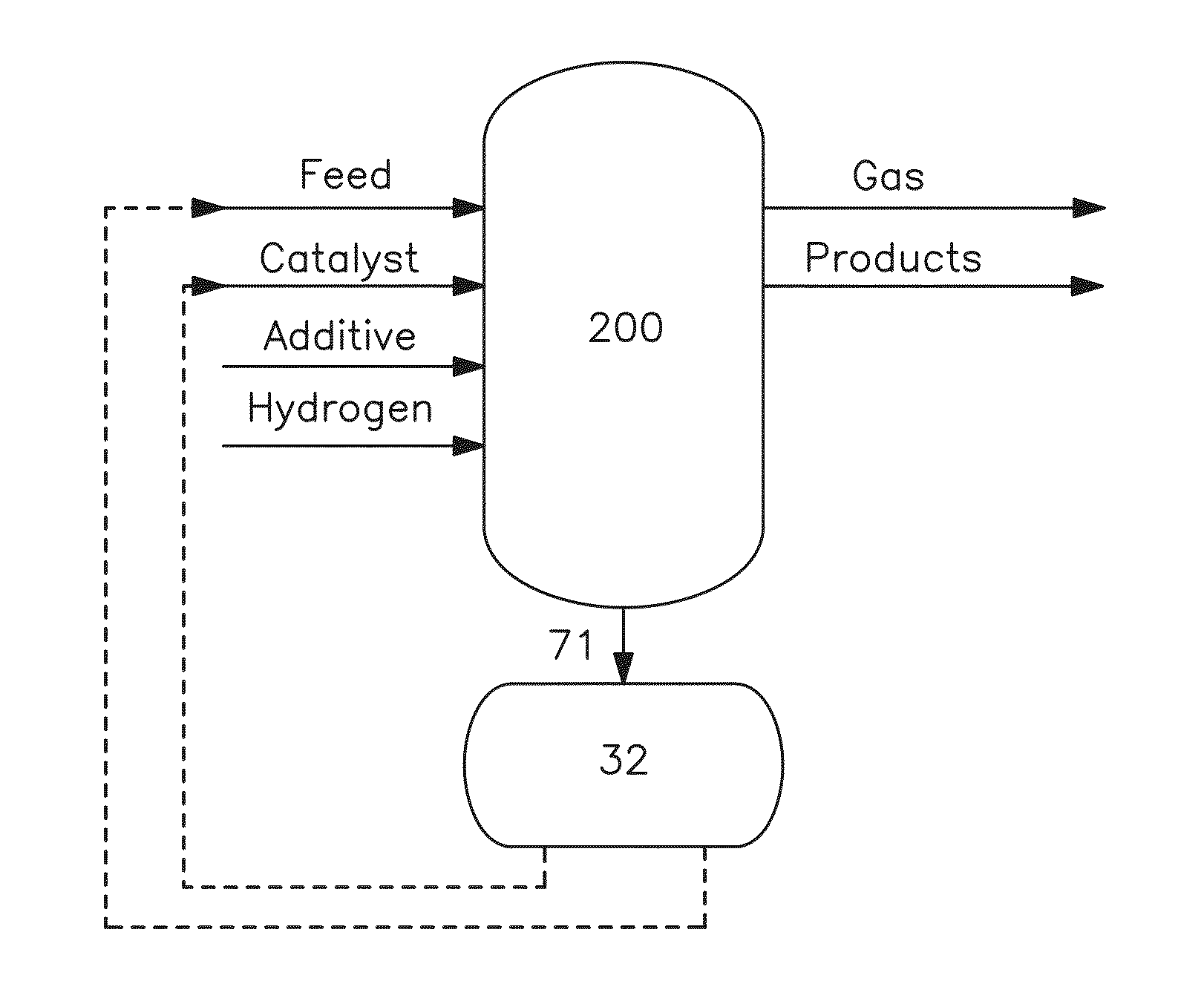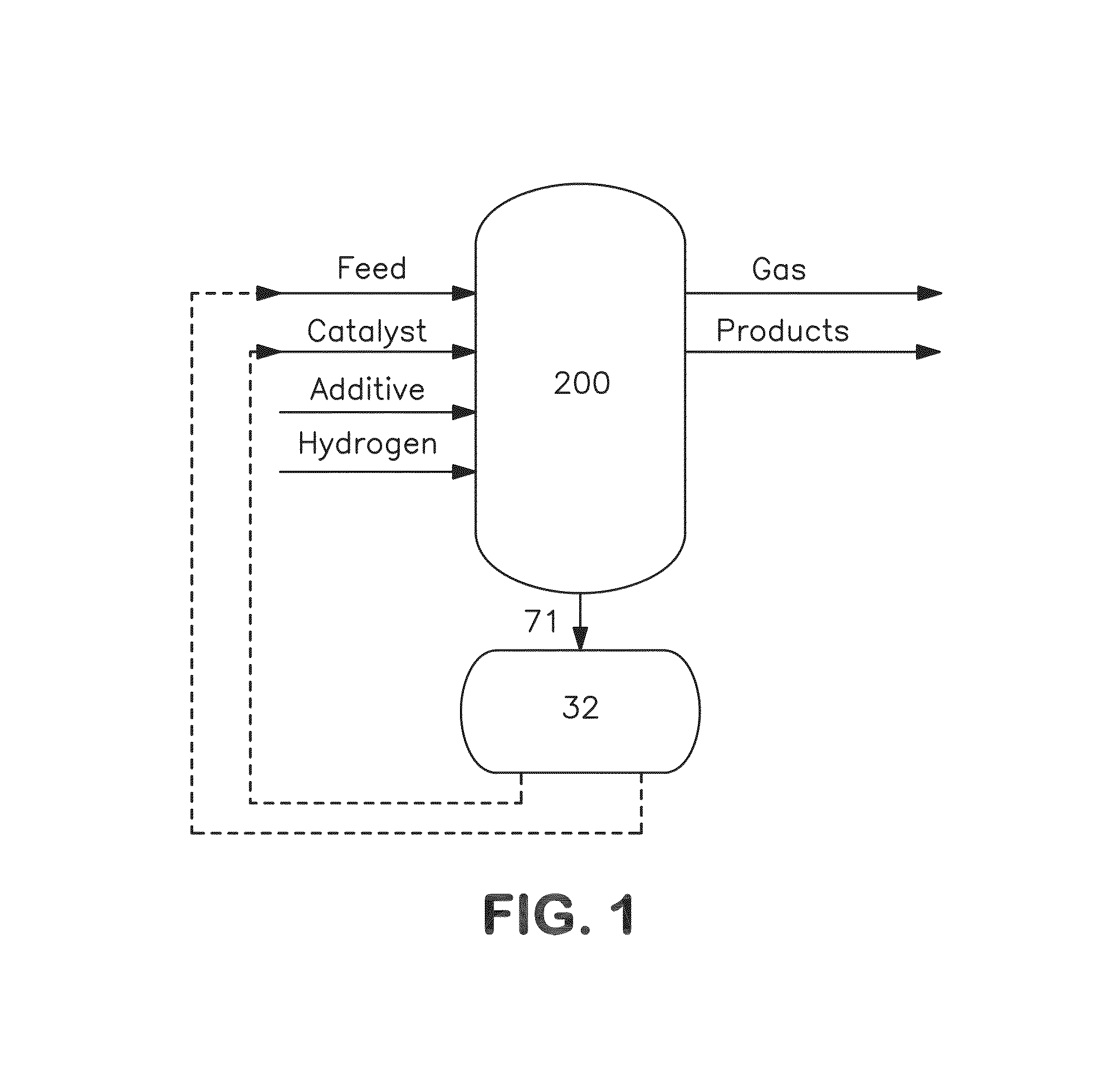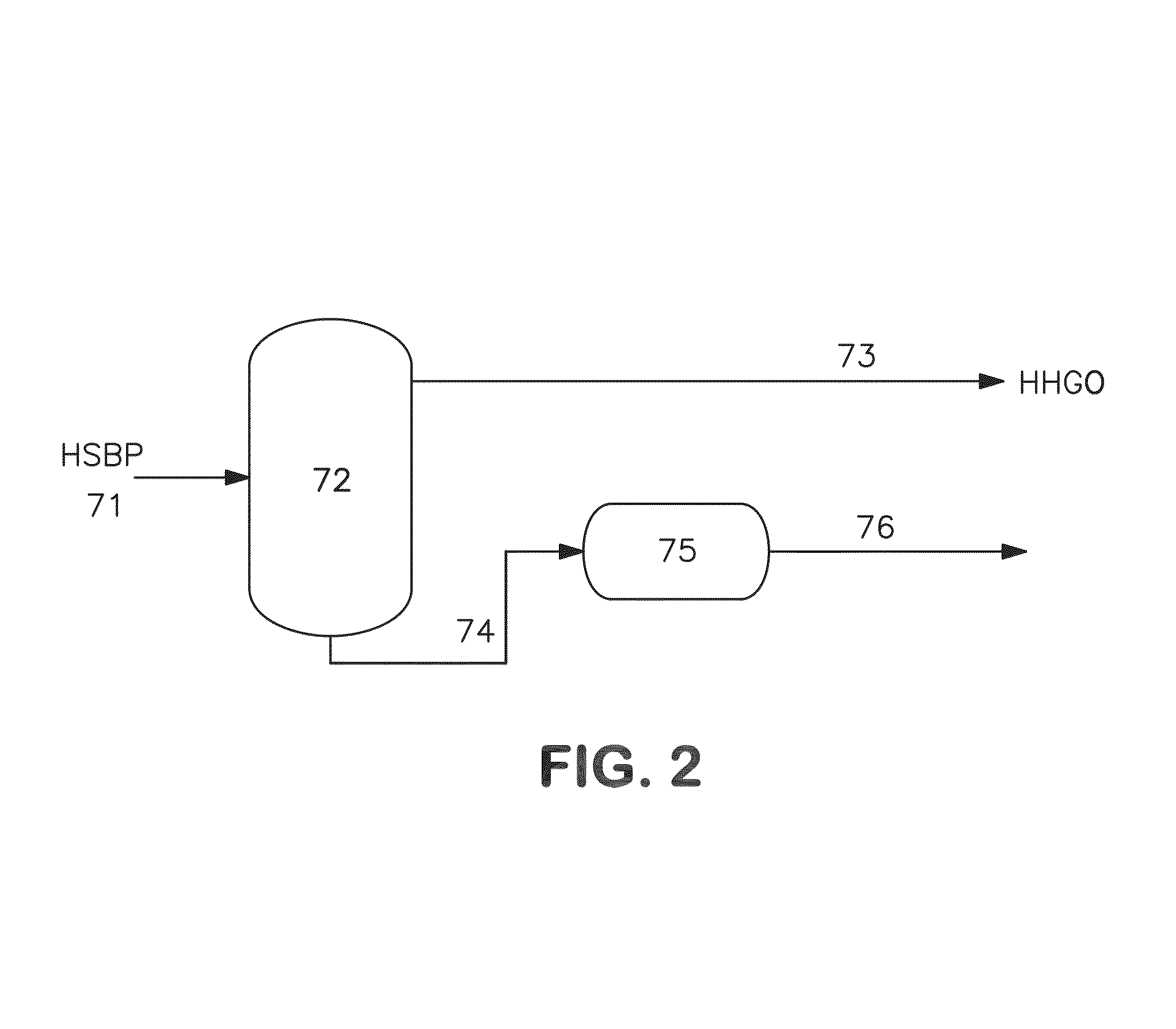Metal recovery from hydroconverted heavy effluent
- Summary
- Abstract
- Description
- Claims
- Application Information
AI Technical Summary
Benefits of technology
Problems solved by technology
Method used
Image
Examples
example 1
Solvent Extraction
[0093]This example illustrates metal scavenger capability of the carbonaceous additive.
[0094]In this example, flake-like material containing the unconverted vacuum residue and the remaining organic additive was used to quantify the metal content and metals mass balance of the hydroconversion process.
[0095]In this example the remaining organic additive was separated by using a desolidification procedure with toluene as solvent. Following the scheme represented in FIG. 2, flakes were generated in unit 75 and the following experiment was conducted.
[0096]10.00 g of flakes were dissolved in 100 ml of hot toluene, this mixture was then centrifuged at 1500 rpm for 20 minutes to separate the unconverted residue of the additive. The solids were decanted and washed using toluene Soxhlet extraction, which is a continuous extraction method whereby fresh solvent continuously flows through the compound to be extracted. After that, the solids were dried in a vacuum oven for two h...
example 2
Thermal Oxidation Treatment
[0100]This example illustrates a thermal oxidation treatment to concentrate metals.
[0101]In this example, the same flake-like material described in Example 1, containing the unconverted vacuum residue and the remaining organic additive were used and the following experiment was conducted for thermal oxidation treatment.
[0102]The C, H, N and S contents in the flakes were determined (Table 5).
[0103]
TABLE 5C, H, N and S content in FlakesCHNS(wt %)(wt %)(wt %)(wt %)Flakes analyses (wtppm)87.346.521.781.78Standard deviation0.58130.04360.0212
[0104]A Lenton Thermal Designs (LTD) Limited tubular furnace that can operate up to 1200° C. was used for large scale roasting of the flakes. Approximately 150 g of flakes were placed in the middle of a quartz tube and glass wool was used to hold it. The quartz tube was 1 m in length and had a 5.5 cm internal diameter. The tube was inserted in the tubular furnace and the sample was heated from room temperature to 500° C. at ...
example 3
Metal Extractions
[0109]Following the scheme represented in FIG. 8, the following experimentation was effected.
[0110]Stage 1 Leach—Molybdenum and Vanadium Leach
[0111]Sodium hydroxide was selected as leach agent.
[0112]Leaching was carried out using 150% of the stoichiometric amount of sodium hydroxide solution under the following experimental conditions (Table 7).
[0113]
TABLE 7Experimental conditions for leachingTemperature20° C.Solid:liquid ratio1:10 g / mlMixing time2 hours
[0114]The slurry was then filtered.
[0115]The solids retained by the filter were washed thoroughly with water, and dried to constant weight at 105° C. The supernatant (plus wash water) and insoluble solids were analyzed for metal content and weighed to allow a metal balance to be completed.
[0116]The metal balance over the first leaching process showed that 97.43 wt % of the molybdenum and 97.30 wt % of the vanadium had been leached into solution.
[0117]The insoluble solids contained 2.55 wt % of the total molybdenum an...
PUM
| Property | Measurement | Unit |
|---|---|---|
| boiling point | aaaaa | aaaaa |
| particle size | aaaaa | aaaaa |
| temperature | aaaaa | aaaaa |
Abstract
Description
Claims
Application Information
 Login to View More
Login to View More - R&D
- Intellectual Property
- Life Sciences
- Materials
- Tech Scout
- Unparalleled Data Quality
- Higher Quality Content
- 60% Fewer Hallucinations
Browse by: Latest US Patents, China's latest patents, Technical Efficacy Thesaurus, Application Domain, Technology Topic, Popular Technical Reports.
© 2025 PatSnap. All rights reserved.Legal|Privacy policy|Modern Slavery Act Transparency Statement|Sitemap|About US| Contact US: help@patsnap.com



